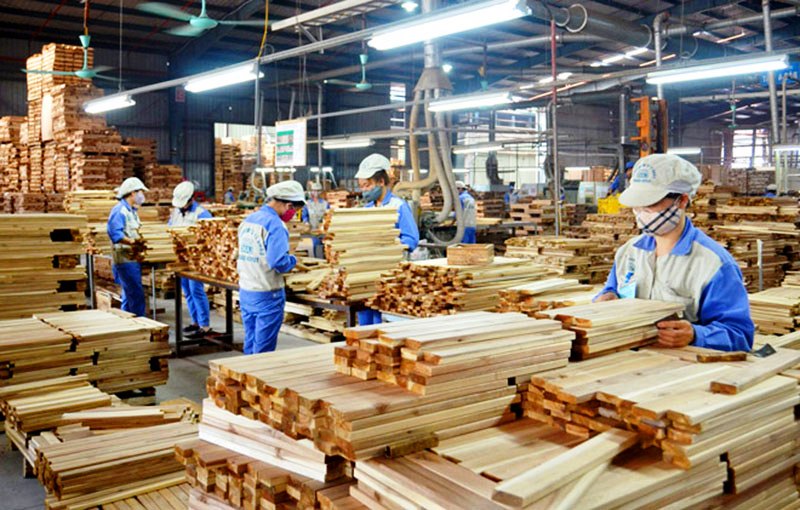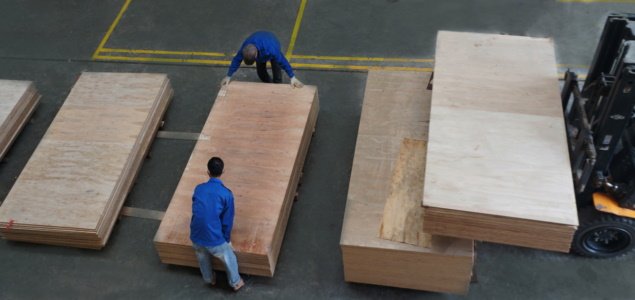The world market is constantly fluctuating and increasingly unpredictable, which is a big challenge for many industries; including the wood industry, but still create opportunities for businesses with good adaptation strategies. This is the opinion of experts at the Vietnam Wood and Furniture Industry Forum with the theme: Keeping a position – taking opportunities, organized by the Ho Chi Minh City Fine Arts and Woodworking Association (HAWA) in Ho Chi Minh City. Ho Chi Minh City, July 28 afternoon.
Long-distance development space
According to statistics from the Department of Forestry (Ministry of Agriculture and Rural Development), the export value of forest products in the first six months of the year was estimated at US$6.42 billion, down 28.8% over the same period in 2022. Specifically. , wood and wood products reached 5.96 billion USD, down 29%; non-timber forest products reached 455.7 million USD, down 26.2%. Preliminary survey results conducted by HAWA show that orders from enterprises in the industry have decreased by an average of 30% in the past time. However, in July 2023, businesses in the industry began to receive orders again, serving the year-end furniture shopping season of the world market.
Mr. Pham Phu Ngoc Trai, Chairman of the GIBC Global Integration and Business Consulting Company, said: The fact that the current order reduction of the wood and furniture industry is only temporary. Vietnam’s furniture industry has enough room to develop in the next 5 to 10 years. Compared with the forecast of global average GDP growth at 3%, the compound growth rate of the world furniture industry is 4.5%. According to a forecast from Statista Market Insights -7/2023, the world furniture market revenue in 2023 may reach 766 billion USD, and it will grow for many more years, is estimated to reach approximately 932 billion USD in 2027 Vietnam’s wood processing industry has maintained its growth for many years at 15.4%/year and is in the top 5 largest wood furniture exporting countries in the world, proving that the industry has solid internal resources.
Sharing the same opinion, Mr. Nguyen Quoc Khanh, Chairman of HAWA also said that, besides the impressive growth rate, wood enterprises are also affirming their initiative in business integration. When the market declines, in the past time, businesses have not been passive but tried to adapt. On the one hand, enterprises in the wood industry reorganized their production apparatus and streamlined the model to reduce costs. On the other hand, try to take advantage of the support from trade promotion agencies to find new markets.
According to Mr. Nguyen Quoc Khanh, in the solutions to cope with the current situation, the wood industry witnessed a new shift, which can be called the expansion of the business margin. Specifically, Vietnam’s big furniture brands are expanding their presence in potential export markets, especially the markets of super-rich countries in the Middle East such as Saudi Arabia and Dubai to access opportunities. supply for new super real estate projects. With the industry’s internal strength, Mr. Khanh said that the export target of 2023 is completely achievable because orders have begun to return recently.
Mr. Tran Si Chuong, a development economist and strategic consultant for businesses, said: The declines of the furniture industry in particular and the global economy in general are the result of many negative factors, but there are still some negative consequences. growth opportunities for businesses to take advantage of. Accordingly, the resonance of negative fluctuations has made the world operate in a completely new way, with new rules of the game, so players must also be new to adapt in time. The most important thing right now is that businesses must strengthen their internal resources to be ready to receive orders when the market recovers.
Improve competitiveness
Mr. Pham Phu Ngoc Trai commented: One of the new “rules of the game” that the market is urgently demanding is sustainability in interior products. This is no longer a voluntary standard as before but has become a mandatory condition, if you want to participate in the market. Green transformation right now is the way to improve competitiveness.
In addition to the current mandatory regulations, Vietnamese businesses will face new requirements such as the Carbon Border Adjustment Mechanism (CBAM) proposed by the European Commission (EC), effective from October. 2023. Accordingly, goods imported into the European market will incur additional costs, if they do not convert to a lower-emission production model for carbon credits. Meanwhile, Vietnam’s wood industry has a significant reserve of planted forests, if it is re-established and well-connected, the carbon credit market is an opportunity for Vietnamese furniture enterprises to increase their advantages. Therefore, Vietnam’s wood processing industry needs to reposition its goals and vision to become a green and sustainable world furniture center,” said Mr. Pham Phu Ngoc Trai.
Ms. Pham Thi Ngoc Thuy, Director of the Department of Private Economic Development (Board IV) emphasized: New market challenges related to the European Union Timber Regulation (EUTR) or development goals. net zero greenhouse gas emissions (Net Zero) will also help Vietnam’s wood and forest product processing industry develop in a more positive direction. Since then, creating conditions for the industry to reach out further, attracting more investment flows from foreign investors.
Mr. Chad Ovel, General Director of Mekong Capital shared: Vietnam’s furniture industry is quite impressive in the eyes of investors with big examples such as AA Corporation, An Cuong, Truong Thanh… With that advantage, the furniture industry Vietnam absolutely has the opportunity to receive the investment wave and post-inflation growth wave. The problem is how to adapt to the current difficulties and how the industry’s sustainable development strategy is implemented.
Mr. Nguyen Quoc Khanh affirmed that Vietnam’s wood processing industry has a great advantage in being proactive in the source of legal plantation materials, having diverse products, and creating a reputation for a complete and sustainable supply chain. Strategically, Vietnamese wood processing enterprises are aiming to account for more than 70% of furniture export sales from Vietnam currently held by FDI enterprises. To do that, enterprises need to invest in increasing added value for export products by raising the proportion of designed and manufactured goods (ODM) to over 60%; create breakthroughs in research, development and technology. At the same time, promote fair marketing to the production and supply of wood materials and other products to dominate the supply chain.
Regarding the export linkage strategy, according to Mr. Nguyen Quoc Khanh, it is necessary to form a logistics center – to promote Vietnamese furniture trade in key markets, first in the US, in order to create favorable conditions for enterprises to export. Exporters can combine access to customers in host countries at a low cost. An investment enterprise will find it difficult to be effective because the costs and risks are too high, but setting up a common home for export businesses in foreign countries will partially remove difficulties such as legal, warehouse, etc. goods management, personnel… Thanks to that, operating costs are also greatly reduced while still ensuring high professionalism and efficiency.





